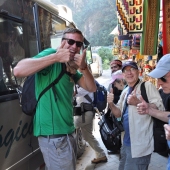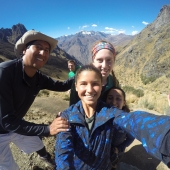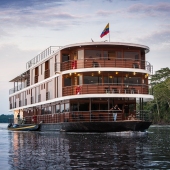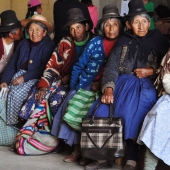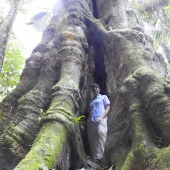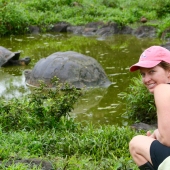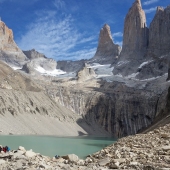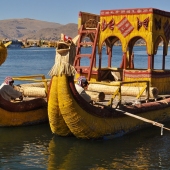The least visited place in Peru: we can take you there Part 1
It's called Manu Biosphere Reserve. It's part of the Amazon rainforest basin on the "other" side of the Andes Mountains in Peru. It might as well be the dark side of the moon. Inaccessability has been the key to survival of this jungle. You can't drive or fly there. This is the place where National Geographic might send a journalist and an anthropologist to explore and write for their magazine. We know this because we 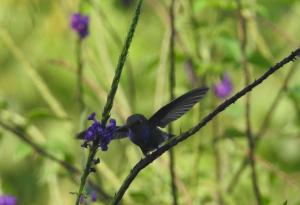 met them in our jungle camp. It's the largest National Park in Peru. And it's not far from Machu Picchu. Kind of. If you don't mind a little 10 hour drive and 8 hour ride in a canoe.
met them in our jungle camp. It's the largest National Park in Peru. And it's not far from Machu Picchu. Kind of. If you don't mind a little 10 hour drive and 8 hour ride in a canoe.
Flights used to be available from Cusco to a small airstrip in the frontier town of Boca Manu. But developers with pockets full of money were able to woo away starving pilots who abandoned budget-conscious tourist flights for lucrative jobs flying for oil and logging companies.
How do you get to Manu Biospher Reserve? It's not easy. But if you're determined, a full scale expedition can be completed in 7 days, once you arrive in Cusco, Peru. From Cusco, ideally, you leave the city early in the morning. You'll need a sturdy vehicle for 10 hours driving on dirt roads, a licensed knowledgeable guide, a cook, and all provisions including stoves, (fuel), food and drinking water. There's no refrigeration, so just get that out of your head. All alcoholic beverages will be consumed at room temperature. "Off the rocks."
The drive out of Cusco begins on pavement and soon deteriorates to dirt roads that crosses over a 15,000 ft pass then descends into winding switchbacks. The route goes through Paurcotambo which is the best (and only) place to stop if you want anything. A good cook will have your lunch prepared and ready to serve while the vehicle is moving. Continue for another couple of hours to the cloud forest and descend into the warm basin of "la selva." (Spanish word for jungle) The dirt road is subject to being covered by landslides during the rainy season and there are plenty of stories about travelers who were stuck on the other side of the landslide and who had to wait for a bulldozer to show up and clear, then regrade the road.
You'll overnight in a lodge where your cook will whip into action to prepare, serve and cleanup your meal. The temperature will be quite 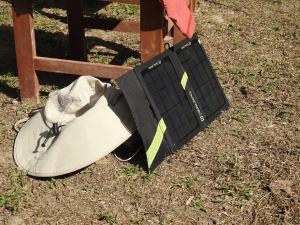 warm (unless a "friaje" cold front moves up from Argentina) Your lodge may have electricity, and if it does, you will have maybe one outlet with one plug. Avoid bringing devices with plugs with 3-prongs. I bought a special charger with a built-in extension cord which had 3-prongs. The idea was that I could charge several batteries / devices simultaneously. I knew the 3-prongs would need a 2-prong adapter in Peru. But when I plugged in the 2-prong plug, it popped and smoke came out of the plug holes rendering the charger useless for the remainder of the trip. My only option was to attempt to charge each item one at a time.
warm (unless a "friaje" cold front moves up from Argentina) Your lodge may have electricity, and if it does, you will have maybe one outlet with one plug. Avoid bringing devices with plugs with 3-prongs. I bought a special charger with a built-in extension cord which had 3-prongs. The idea was that I could charge several batteries / devices simultaneously. I knew the 3-prongs would need a 2-prong adapter in Peru. But when I plugged in the 2-prong plug, it popped and smoke came out of the plug holes rendering the charger useless for the remainder of the trip. My only option was to attempt to charge each item one at a time.
The electric current flowed like molasses and I was lucky to get 50% of my external battery charged up for the next day. Fortunately I had a backup plan. I was traveling with a small solar panel and we would soon discover the limitations of living for several days with devices that needed electronic juice and having only one source to capture the precious commodity.
Hummingbirds, Oro Pendula, thrushes and many species of birds are now noticeable. It was nice to have a private bathroom, even if there was not the luxury of hot water. But it was quite shocking, as I stood in front of the sink brushing my teeth, and watched the biggest cockroach I have ever seen walk out of my toiletry bag hanging in front of my face. Mental note. Always, always keep my toiletry bag, backpacks and luggage zipped at all times.
Having achieved a reputation among my friends as an avid adventure traveler opened the door to a new level of gift-giving for my friends. It was not ususual for me to get gifts that would not even be considered for most men, let alone any women I know. I have received things like mosquito head net, flint firestarter kit, knives, headlamps, survival blanket, rain covers and solar panel. Here's the craziest thing about all this. I think I have used everything at least once! Yes, even the mosquito head net.
The solar panels are heavy, even the "backpackers'" style. But I threw them in my pack not fully knowing how and when they would be utilized. In hindsight, I'm now patting myself on the back for making the decision to bring them. When staying in hotels, even basic lodges, I have rarely needed to supplement the in-house electrical source. And I always carry an external battery (holding 12,000 amps) which is always enough for 1-2 days without reliable power. If like me, you've never actually used solar panels "for real," don't wait until you're in the field to learn how to use them "for real." Practice at home, pretending you have no power.
After our first night in the lodge, we drove a couple more hours to the small village of Atlaya, where our canoe was waiting. First, we stopped at a local house with open walls and where the family was sitting together eating breakfast. The mom jumped up and ran over to a pile of "wellington-style" rubber boots while we calculatedour shoe sizes into European numbers so she could find boots. She picked up each boot, held it upside down and shook it and reached in to the toe of each boot to check for cockroaches before we stuck our feet inside. She didn't flinch and did it with precision and speed.
I have to admit, I was grateful that she did it for us and didn't just warn us to do it ourselves. Once we got our boots, we found a shop, actually it was a window into someone's home, where we purchased a big bag of coca leaf and bottles of warm soda. The dock was down a short hill at the end of the street. The van was parked while the boatman, cook and driver loaded our supplies into the canoe. Some enterprising local official had built a public restroom at the end of the street. We gladly paid 1 Peruvian sol to use it before boarding our boat.
The boatman seemed a little agitated that we were so late. Normally people start out earlier. It happened that the road we took was closed after we arrived due to a strike by a local group. We were lucky we got through. Strikes can happen anywhere. In Cusco, Sacred Valley, the highlands on the way to Lake Titicaca and on the way to the jungle. Whoever is striking takes control of the roads to get attention. They may pile boulders, mud or just block the roads with their physical presence. I've heard of guides and drivers who have been allowed to pass if they are able to make their passionate plea to the people in charge.
To be continued.


